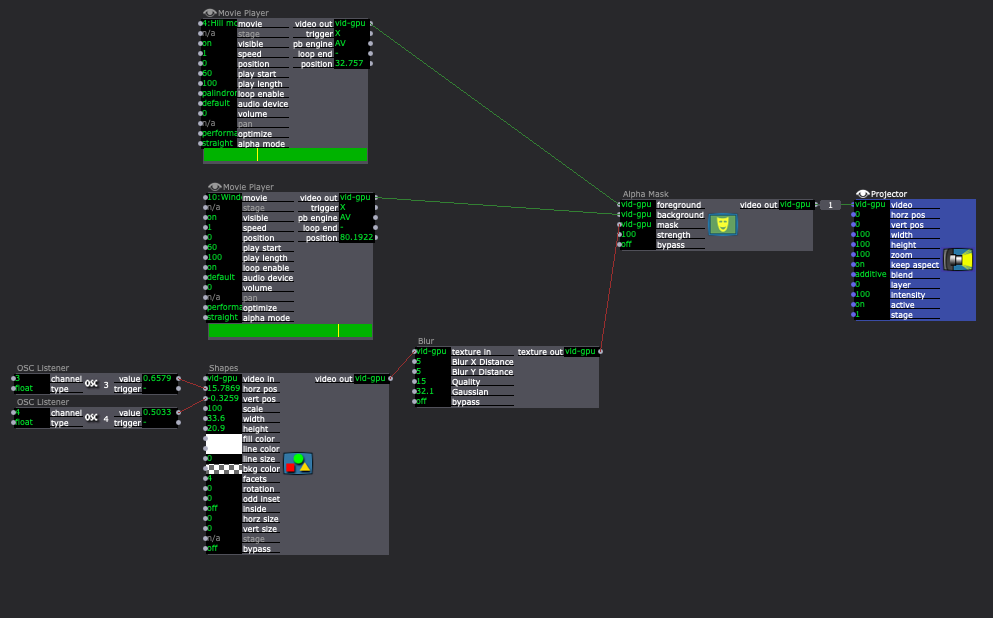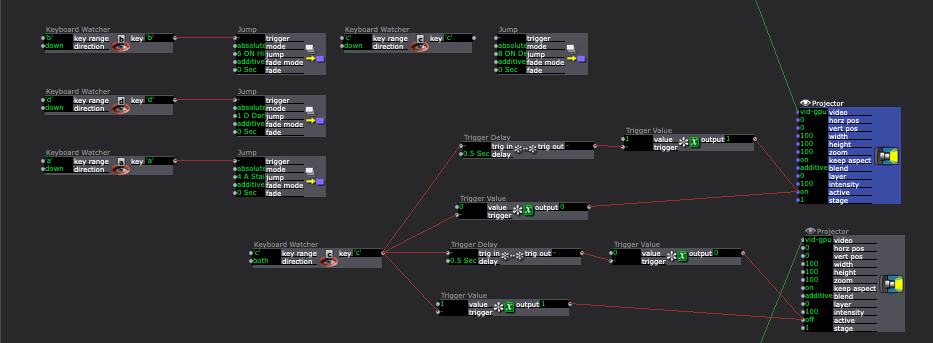Magic Window
Posted: December 14, 2018 Filed under: Uncategorized Leave a comment »This interactive window came on the heels of a video installation that I made for the Hopkin’s Hall Gallery, State of Swing. Making this, I considered reality’s complexity, and the filtering and framing we do to make meaning for ourselves.
Two videos play simultaneously, and filters hang on a pedestal for viewers to pick up and look through. Each filter blocks out one video and lets the other pass through.
While I find the simplicity of State of Swing captivating, I wanted to see what could be possible with Isadora while holding onto a similar concept–the audience controls what they see and becomes aware of how much happens that they don’t perceive.
Thinking about framing, reflecting, refracting, and obscuring, a window came to mind. I was excited by the idea that a window would reflect myself back at me when I was on its the light side. I’m pocketing this, because, while this didn’t become a part of this version of this installation, I hope it comes back!
I went to Columbus Architectural Salvage, found dusty window, and tried to project onto it. The dust allowed me to see a faint projection on the window, but the Kinnect could only sense the glass when it was perfectly perpendicular to its waves.
Meanwhile, I did some research about projecting onto glass, and there is really expensive film that adheres to glass, making it a projectable AND TRANSPARENT surface. COOL! But, the cheaper option was to paint buttermilk onto the glass. (No it doesn’t smell at all once it dries.)
Still, the surface must still have been too flat and reflective for the Kinnect. So, Alex helped me figure out a WiiMote and Malu helped me solder together a couple of small IR lights and connect them to the window. I’m glad I learned how to do this, but they weren’t bright enough and were too directional to get a consistent reading from the WiiMote. Luckily, the MoLa had a couple of IR lights, and we turned the system around.
Now, the IR light sits on the projector and the WiiMote is connected to the window. The WiiMote sends its x and y coordinates to the computer via Bluetooth. These coordinates connect to the shapes actor in Isadora. Then, each scene had two videos playing. For example, one was a hill in the the woods. The other shows this same hill with people dancing. With the Shapes Actor and and Alpha Mask Actor, a user can aim the window (connected to the WiiMote) towards the WiiMote in order to see the dancers on the hill. Additionally, while holding the window, the user can move throughout the projection to see different parts of the image.

Then, I created four places where the window would hang. Using a Makey Makey, each hanging place changed the video projection by jumping to another scene. I mapped the projection to project only on the window while the Makey Makey circuit was closed. Then, once the window is lifted off of that hanging place, the image expands to fill the space and the the user can move around to reveal new parts of the image. If they set the video down in a different place, the scene will change and the process begins again.
The Makey Makey works like an external keyboard. Closing the circuit functions like typing a letter. Turning the Projector Actors on and off with up and down key strokes (closing and opening the Makey Makey Circuits) was a little tricky. The closed circuit repeatedly sent the “down” signal. The image below shows a solution to this problem.

See it for yourself! This video contains some user interaction, and more of me explaining how to use the system and how it works.